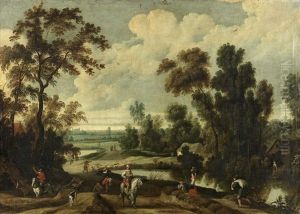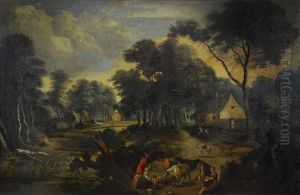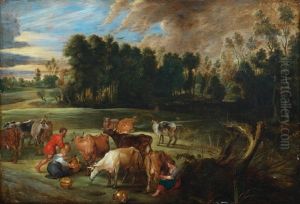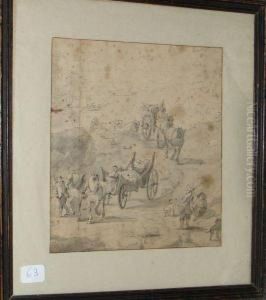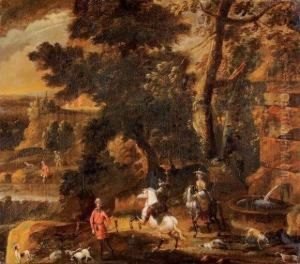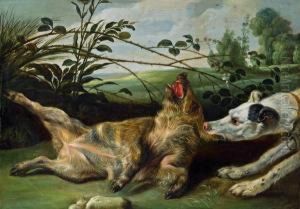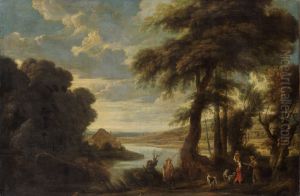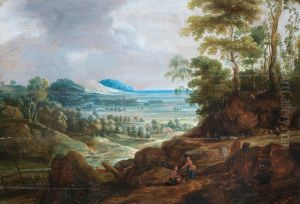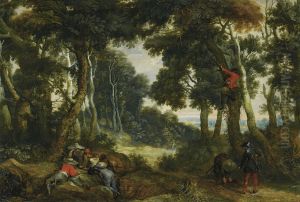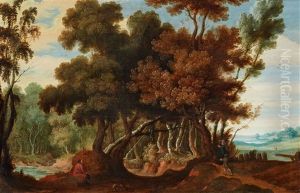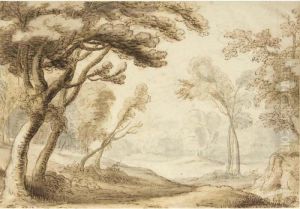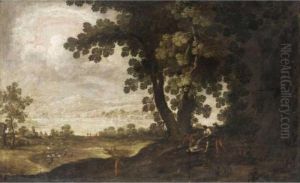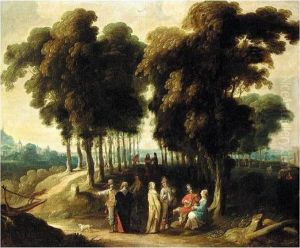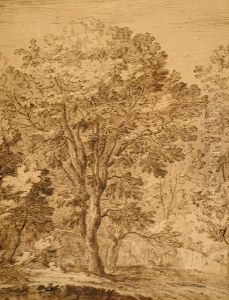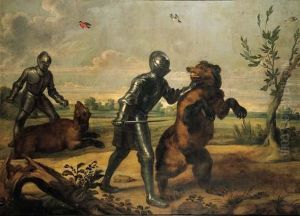Jan Wildens Paintings
Jan Wildens was a Flemish Baroque painter and draughtsman known for his landscape paintings and collaborations with prominent figure painters of his time. Born in Antwerp in 1586, Wildens became a master in the city's Guild of St. Luke in 1604. Despite his early start, most of his notable works are dated after 1615.
Wildens' landscapes are characterized by their vivid depiction of nature and often included depictions of the seasons or hunting scenes. His style showed a clear influence from earlier Flemish landscape artists, such as Joachim Patinir and Pieter Brueghel the Elder, but he also incorporated Italianate features, which became more prominent in his later works. This was likely due to his visit to Italy, although there is no concrete evidence documenting this journey.
A significant aspect of Wildens' career was his collaboration with figure painters like Peter Paul Rubens and Anthony van Dyck. For instance, he often painted the landscapes in Rubens' works, while Rubens added the figures. This practice was quite common in the Antwerp art scene, where specialization allowed artists to contribute their strengths to a single piece.
Jan Wildens also dealt in art and owned a significant collection himself. He was not only a successful painter but also a businessman and art dealer. His house in Antwerp was a center of the art trade, and he played a substantial role in the dissemination of art during the Baroque period.
Wildens passed away in Antwerp in 1653, leaving behind a legacy of influential landscapes that would continue to inspire artists beyond his time. His work can be found in many major museums, and he is remembered as an important figure in the development of Flemish landscape painting.





